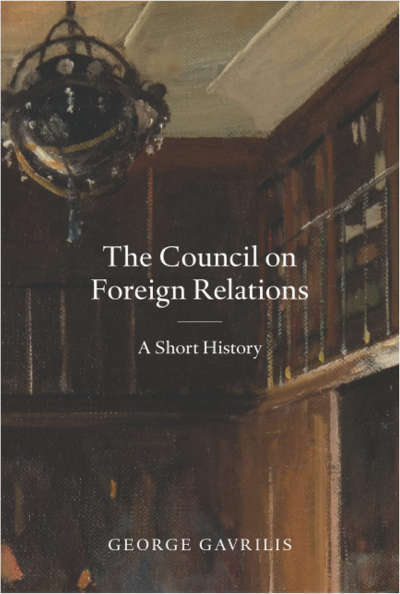In the picture
Book cover of George Gavrilis' book 'The Council on Foreign Relations. A Short History' (New York: CFR, 2021) 186 pages.
The Council on Foreign Relations is possibly the U.S. organization outside the U.S. government that has had the greatest influence on Washington's foreign policy. Created in 1921 when the United States was emerging as the world's leading power at the end of the Great War in Europe, since then the CFR has been the great think-tank that has thought and rethought the role and actions of the United States on the international scene. On its 100th anniversary in 2021, the CFR published this brief history, written by George Gavrilis as a notary, which reviews its development throughout this time.
This book, extended by Ricard Haass, president of the CFR since 2003, is a reduced analysis of dates and names that is nevertheless of interest to those who are professionally involved with International Office . Otherwise, with frequent photographs of events and protagonists, it reads like a magazine.
The multiplicity of think-tanks in the United States (some as notorious as Brookings Institution, CSIS, AEI or Wilson Center-Hoover Institution, on the West Coast) may blur the preeminence that the CFR had for several decades. Born as a bipartisan organization and with the broad field of International Office as its object of study (the other centers named emerged later with a more precise thematic and ideological spectrum), throughout these one hundred years many of the Council's prominent members have been secretaries of state, White House advisors or personal advisors to the president. It would be quicker to address the exception: which of the most outstanding figures in American foreign policy were not part of the CFR. Thus, the Council's board or the leadership of one of its study groups has included George Kennan, Hans Morgenthau, William Bundy, Henry Kissinger, Zbignew Brzezinski or Cyrus Vance; David Rockefeller was chair of the organization, and several US presidents were members before reaching the White House, such as Richard Nixon or George H.W. Bush. Bush.
Likewise, the magazine 'Foreign Affairs', published by the CFR since September 1922, has had competitors, multiplied in the era of the Internet and online media, but the magazine continues to have undoubted prestige. Many of its articles have had an enormous echo, such as the reduced version of the 'long telegram' of Mr. X Kennan), or others whose thesis were later developed by their authors in high impact books (such is the case of 'The Clash of Civilizations', by Samuel Hungtington). The editors or directors of the magazine have had great relevance, such as Fareed Zakaria and Gideon Rose.
When a self-confident United States, after expanding from coast to coast and establishing its influence in the inter-American order, began to look to other continents, it felt the need for experts on any part of the world who could accompany the decision making of American political power, as Gavrilis explains. With President Woodrow Wilson they traveled to Europe, for the Paris Peace lecture that put an end to World War I and established the League of Nations, several academics who then wanted to be able to prolong the intellectual work that they had begun to develop in group. The purpose was to give strategic weight to the decisions that could be taken by the American political elite, in that new era of great world power, while influencing an American society accustomed to isolationism and which viewed the new internationalism with suspicion. The CFR was constituted as a association of members who contributed economic quotas for the support of the activities, which were behind closed doors; only on rare occasions did they organize public events. Over time, the organization grew, expanded its headquarters (the main office is in New York, but it also has a large building in Washington) and, although it has largely maintained its desire to debate out of the spotlight, today it has a large staff and a millionaire budget .
The book reviews the tone of the different periods: moments of leadership, more atonic periods, times with fewer resources due to economic crises.... In general, the CFR has known how to orient its work of agreement with each circumstance. It is normal that being a book paid for by the institution itself, as a celebration of its long life, it is not particularly critical of any episode of the past that could tarnish its fame; it must also be accepted that no shadows are mentioned of Haass' presidency, in which he has been for twenty years. In any case, test that the CFR has not done too badly for U.S. interests is that, in a particularly competitive think-tank environment, it continues to obtain substantial private sector funding for its work.

